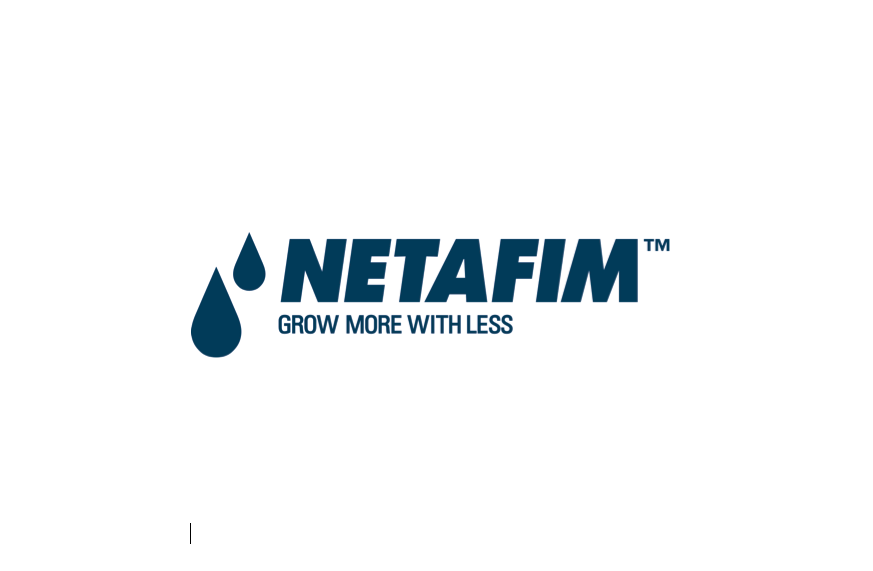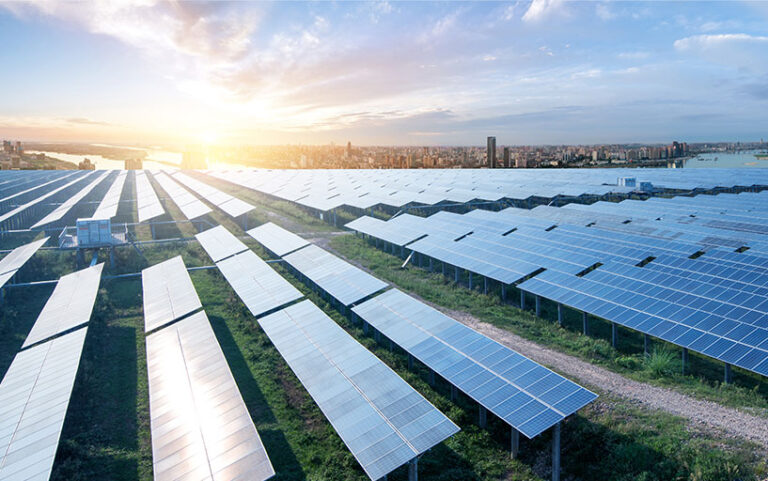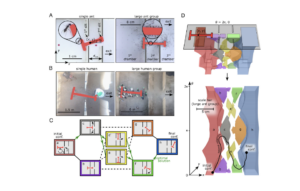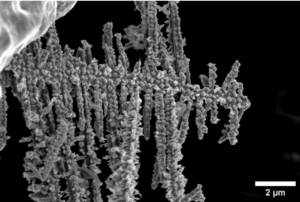Actu salon KKL 2014 : Netafim France : cap sur le marché de l’irrigation du maïs, entrée au Club CDC Climat et nouveaux locaux en janvier

[:fr]Netafim vient de s’illustrer par une superbe avancée au plus haut niveau des institutions françaises. La filiale française du leader mondial de l’irrigation au goutte-à-goutte, Netafim France, vient d’entrer au club CDC Climat, un think tank très select créé par la Caisse des Dépôts et Consignations. Le CDC Climat, qui s’est doté d’un site internet aussi impeccable en design qu’en contenu, est très focalisé sur les problématiques d’eau et d’agriculture. Il a pour mission d’assurer la transition énergétique et écologique par le biais de groupes de travail constitués d’experts de haut niveau. Ces groupes se répartissent les missions et se réunissent trois fois par an, chaque rencontre exigeant un important travail de préparation.
RV sur le Pavillon Innovation Israël du KKL niveau 1 de 10h00 à 20h00.
Qui trouve-t-on au sein du Club CDC Climat ? En autres : l’Assemblée Permanente des Chambres d’Agriculture (APCA)*, le CNRS, l’INRA… des agroindustriels sensibilisés aux questions de gestion durable, des ministères français (écologie et développement durable, agriculture, industrie…) et de nombreux autres organismes spécialisés…
Ce think tank « étatique » a pour objet de favoriser le transfert des technologies les plus innovantes dans le domaine de l’eau et de l’agriculture vers l’agriculture française. Et là Netafim, qui diffuse ses technologies d’irrigation dans plus de 110 pays développés ou non, a beaucoup à apporter. En fournissant des réponses technologiquement avancées et durables, Netafim répond aux besoins de l’irrigation agricole moderne d’aujourd’hui : produire plus et mieux avec moins d’eau. C’est donc avec enthousiasme que l’équipe de Netafim France a rejoint le CDC Climat, malgré une activité sur le terrain déjà très intense en France où ce fleuron de la technologie israélienne compte d’innombrables réalisations. Brunon Montagnon, directeur de la communication de Netafim France a expliqué à Israël Science Info : « en tant que leader mondial des solutions efficaces de gestion de l’eau dans l’agriculture et les espaces verts, notre mission est de promouvoir un changement global de l’utilisation de l’eau dans l’agriculture. Au sein du CDC Climat, Netafim veut vulgariser ses technologies très répandues en Israël et les adapter aux cultures et au climat français ». C’est par cette vision « globale », pas seulement au niveau de l’entreprise ou d’un pays (Israël) mais à toute la planète, que Netafim veut étendre son transfert de technologies très innovantes et contribuer à la protection des ressources naturelles.
Bruno Montagnon précise : « En France, Netafim travaille déjà avec les plus gros légumiers français, et de nombreux agriculteurs, il est leader de l’irrigation sur les marchés de l’arboriculture et de la viticulture. A présent, notre objectif en France est de vulgariser nos technologies à la culture du maïs car cette culture est très consommatrice en surfaces agricoles et en eau. » La France est le premier exportateur européen de maïs. La culture du maïs occupe environ 9% de la surface agricole utile (SAU) en France et dépasse les 3 millions d’hectares, avec une prédominance en l’Alsace (44% de la SAU) ou les Landes (60%). Le maïs est cultivé sur l’ensemble du territoire, la Bretagne et les Pays de Loire concentrant à eux seuls plus d’un hectare sur quatre. La production mondiale ne parvient pas à couvrir une demande qui croît encore plus vite (837 MT). Du coup, les stocks diminuent et les prix grimpent. Grain ou fourrage, l’alimentation animale est le principal débouché du maïs. Le maïs grain est destiné aux volailles, aux ovins et aux porcs, le maïs fourrage aux bovins. La récolte peut être consommée par les animaux sur l’exploitation ou commercialisée (source BASF Agro).
Netafim a inauguré ses nouveaux locaux en janvier 2014
En janvier 2014, Novactis, parc d’activité des bouches du Rhône (Gardanne), a accueilli pour la première fois une entreprise internationale, Netafim, qui occupe désormais près de 3200 m2 couverts pour 3000 m2 de stockage. L’inauguration s’est faite en présence du consul général d’Israël à Marseille, M. Barnéa Hassid. Grâce à un réseau de distributeurs, Netafim France réalise un chiffre d’affaire de 20 millions d’euros, dont la moitié est générée par l’Afrique du Nord et l’Afrique francophone. Netafim, leader mondial dans l’arrosage automatique et les techniques d’irrigation au goutte-à-goutte compte 4000 personnes dans le monde, 11 usines et réalise un chiffre d’affaires de 810 millions de dollars.
Produire mieux avec moins d’eau
Comme la population mondiale ne cesse de s’accroitre et que les ressources naturelles deviennent de plus enplus rares, améliorer l’efficacité a plus de sens que jamais. Netafim aide ses clients à obtenir de meilleurs rendements, de meilleures récoltes, en utilisant moins de ressources naturelles. Netafim est le leader mondial dans les solutions efficaces de gestion de l’eau pour l’agriculture. Netafim a ouvert la voie avec l’invention du premier système d’irrigation par goutte à goutte au monde en 1965. Depuis, Netafim a développé des solutions innovatrices spécialisées par culture, permettant d’optimiser le rendement, tout en réduisant au minimum l’utilisation des précieuses ressources en eau. L’efficacité n’a pas comme seul objectif le résultat final. Elle est aussi utile pour l’environnement. Utiliser l’eau, la terre et l’énergie d’une façon plus intelligente et responsable, permet de protéger les ressources naturelles de la planète. En utilisant tout, de l’eau au CO2 d’une façon plus intelligente, Netafim contribue à la protection des ressources naturelles de la planète. Plus de conservation signifie plus de résultats, aujourd’hui et demain. C’est pourquoi nos solutions profitent non seulement à votre résultat final, mais aussi à l’environnement.
* Voir interview de Guy Vasseur dans Israël Science Info N°8
* CDC Climat est la filiale de la Caisse des Dépôts entièrement dédiée à la transition énergétique, à travers trois domaines de compétences, la recherche économique, le développement de projets innovants et l’investissement. Elle bénéficie de la capacité financière de la Caisse des Dépôts et des savoir-faire du groupe pour apporter des réponses adaptées à ses interlocuteurs, pouvoirs publics, acteurs locaux, sphère économique et financière. CDC Climat accompagne les collectivités publiques et les entreprises dans la mise en œuvre de leurs stratégies et actions de transition énergie-climat. Société anonyme détenue à 100 % par la Caisse des Dépôts, CDC Climat est dirigée par Pierre Ducret, président-directeur général, et Jean-Pierre Sicard, directeur général délégué. 26 juin 2013. CDC Climat Recherche a été classé 1er think tank français sur l’économie du climat et 7ème en Europe par l’ICCG en juin 2013.
[:en]China is the world’s largest potato producer, accounting for 22% of the global production. With increased potato production and domestic consumption, together with a gradual transition towards a market economy, China has significantly expanded its trade of potatoes and potato products in the past two decades.
Guyuan region in Hebei Province, central China, is dubbed as China’s No. 1 potato production base and is characterized by arid climate and little access to traffic. 89% percent of its 1.5 million residents are farmers out of which some 116,000 are living in absolute poverty.
Potato is planted here on 0.1 million ha with an output of 2 million tons. Guyuan presently has more than 2,000 potato processing companies, a number of wholesale markets and a potato shipping association to ensure timely delivery of fresh potatoes to 17 provinces, including Hong Kong and Macao as well as Taiwan and some European countries. By 2010, the Guyuan aims to increase its potato acreage and output to 0.2 million hectares and 4.5 million tons, respectively.
In 2008, 60% of China’s farmlands are arid and farmers will earn a higher profit from growing potatoes than from wheat, corn, paddy rice and beans, according to Mr. Qu Dongyu, Director of the China Potato Committee.
Therefore, new innovative sustainable technologies are needed not only for raising and sustaining the potato productivity per hectare but also for producing quality tubers using scarce and expensive resources such as water and fertilizer in order to meet both domestic demand (consumption per capita 32 kg) and processing industry needs and to be more competitive in the market.
Situation
Food and agro-industrial crop
Water scarcity
Inefficient use of water
Sandy loam soils
Leaching of nutrients
Low water and fertilizer use efficiency
Low tuber yields with lower quality
Why drip is needed?
The economic importance of potato in meeting food security and agro-industry demand. To conserve water, increase water and fertilizer use efficiency and optimize tuber yields.
Agro-industry name
Frito-Lay China
Farm details
Location: Frito-Lay Seed Potato Farm, Guyuan (36° 0′ 1″ N-latitude, 106° 28′ 0″ E-longitude), Hebei Province (180 Km south west of Beijing), China
Crop variety: Atlantic
Crop spacing: Row to row – 0.9 m and plant to plant – 0.15 m
Plant density: 74,074 plants/ha
Crop season: Sowing May 2006
Climate: Dry sub-humid climate, frost free
Rainfall: 521 mm/year
Reference crop evapotranspiration – 831 mm/year
Soil physical properties: Sandy
Soil pH: 6 to 7.5
Bulk density: 1.6 g/cm3
Water table: Below 6 m
Soil chemical properties: N (30 mg/kg), medium in P2O5 (6 mg/kg) and high in K2O (72 mg/kg)
Water source: Bore well
Power source: Electric pump
Agro-solution: What has been done?
Subsurface drip irrigation system (SDI):
Head control unit, main and sub-main pipes besides Super Typhoon dripline 16 mm diameter, with a lateral spacing of 0.9 m, emitter spacing of 0.3 m and emitter flow rate 1.1 Litres/hour. Each crop row was irrigated with one dripline installed 5 cm below the soil. Year of drip system installation: 2006
Agronomic and technical support:
Crop water requirement and irrigation scheduling: Depth and frequency of water application; water quality consideration and measurement of applied water.
Fertigation scheduling: Soil and water analysis, estimation of nutrient dose, selection of fertilizers and their compatibility, application skill via drip system, and foliar diagnosis for nutrient deficiencies.
System operation and maintenance: Pressure reading, valves operation, measurement of applied water. Cleaning of filters, fertilizer tank, acid treatment, chlorination, etc.
Training and capacity building: Soil water plant relationships, drip irrigation and fertigation principles, benefits, limitations and utility; water quality and herbicide usage.
Results
Improved tuber yield: Conventional centre pivot sprinkler irrigation – 42.0 tons/ha and with subsurface drip yield has increased by 16% (48.6 tons/ha).
Improved tuber quality: Reduction in sucrose and dextrose content by 45.8% and 136% in comparison to centre pivot sprinkler irrigation. Tuber composition favored by chips potato processing units.
Water requirement and saving: Conventional centre pivot sprinkler irrigation – 2400 m3/ha and with subsurface drip – 145 m3/ha. The water saving by using drip over centre pivot sprinkler is 40% or 950 m3/year/ha. As an illustration, the saved water can irrigate 0.65 ha.
Economic indices: Higher net returns by subsurface drip (918 US$/ha) in comparison to centre pivot sprinkler irrigation.
Additional benefits: Uniform tuber size and higher proportion of A-grade tubers, improvement in fertilizer use efficiency, management flexibility, less weed growth, and uniform irrigation of potato on undulated terrains.
Impact
Drip irrigation of potato in China is a feasible eco-technological and economically viable technology.
Use of scarce water resources, in a sustainable way, in potato cultivation to spread over a larger area.
Higher productivity, quality tubers, food security and increased income to farmers.
Farmers and processing units are willing to expand the drip irrigation to the remaining potato areas.
Potato best management practices: Subsurface drip irrigation (SDI) and fertigation scheduling.
Grow More: 16% tuber yield
With Less: 40% water saving[:]







